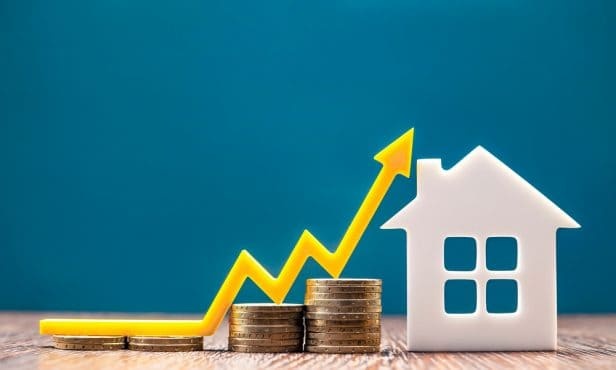The property market and house prices have soared in the past 12 months despite the adverse impact the global pandemic has had on the UK economy, as people sought more living space and locked into cheap mortgage borrowing costs.
One of the major factors driving up house prices over the past year was the stamp duty holiday, introduced in July 2020, which finally ended on 31 September after being phased out over the summer period.
The scrapping of stamp duty on properties worth less than £500,000 prompted record numbers of transactions, as buyers were able to save up to £15,000. Yet despite the ending of the tax break the housing market has remained relatively strong.
House prices grew by 7.1% in November, Zoopla said, meaning the average house has now gained around £16,000 in value over the last 12 months. In most regions of the UK prices have grown by more than 2019 and 2020 combined.
The average price of a home currently stands at £240,900, according to the property portal, owed in part to the widening supply-demand imbalance in the market. But will the trends driving the residential property market continue into 2022?
Grainne Gilmore (GG) and Richard Donnell (RD), from Zoopla’s Research & Insights team, discuss the outlook for the UK housing market next year.
GG: Richard, our latest house price report reflected what has happened in the market over the past 12 months. Prices are up 7.1% on the year, and 6.6 million homes have risen in value by more than £30,000. This is not what many would have predicted at the start of the pandemic back in March last year.
RD: Yes, the market in 2021 has been remarkably busy for agents, considering we are in a global pandemic. But, the pandemic itself has been one of the drivers of buyer demand, with many households taking lockdowns as an opportunity to reflect on where they were living, and the space in which they were living. Add to this the stamp duty holiday, and we have seen transactions rise to 1.5 million – translating into around one in 16 privately-held homes changing hands in 2021.
They believe the the pandemic-inspired ‘search for space’ has further to run in 2022.
GG: The rise of Omicron is causing more uncertainty for the households, and the wider economy, in the coming weeks. Our data shows a slowing in buyer demand, but it is very much in line with the usual seasonal trends. We expect a bounceback in demand in the days following Christmas and into the New Year. However, could Omicron have any impact on supply?
RD: The housing market is usually busiest in the first couple of months of the year with a spike in new listings as well as a surge in buyer interest. Starting last year with restrictions and schools closed put off many sellers. So long as schools remain open and we don’t see widespread restrictions then we would expect a strong flow of new instructions.
But looking through the current trends to the rest of 2022, what other factors will be at play?
GG: There will be more economic headwinds next year, but the ‘pandemic-led’ search for space has further to run. Office-based workers will still be recalibrating their working practices and their home life, and some may choose to make a move because they no longer have to live so close to their workplace. This will continue to put upwards pressure on houses situated in wider commuter zones and more rural and coastal areas. There is more room for prices to grow in the more affordable areas, and we forecast average price rises of 4% next year, and 1.2 million transactions, roughly the same level as between 2014 and 2018. How long do you think the pandemic will continue to impact the housing market?
RD: When we look back at the pandemic in five to ten years we will recognise it marked a major turning point in the link between home and work and people’s attitudes to their home. The pandemic has engendered some seismic changes in how people want to work, and how they will work in the future. This trend has further to run, as more office-based workers decide how far they can live from the office if they do not have to be there every day into 2022 and 2023. Together with other structural factors such as an ageing population, the result should be a greater proportion of homes trading each year, bucking the decline over the last five to ten years and supporting the size of the market for agents and lenders.










